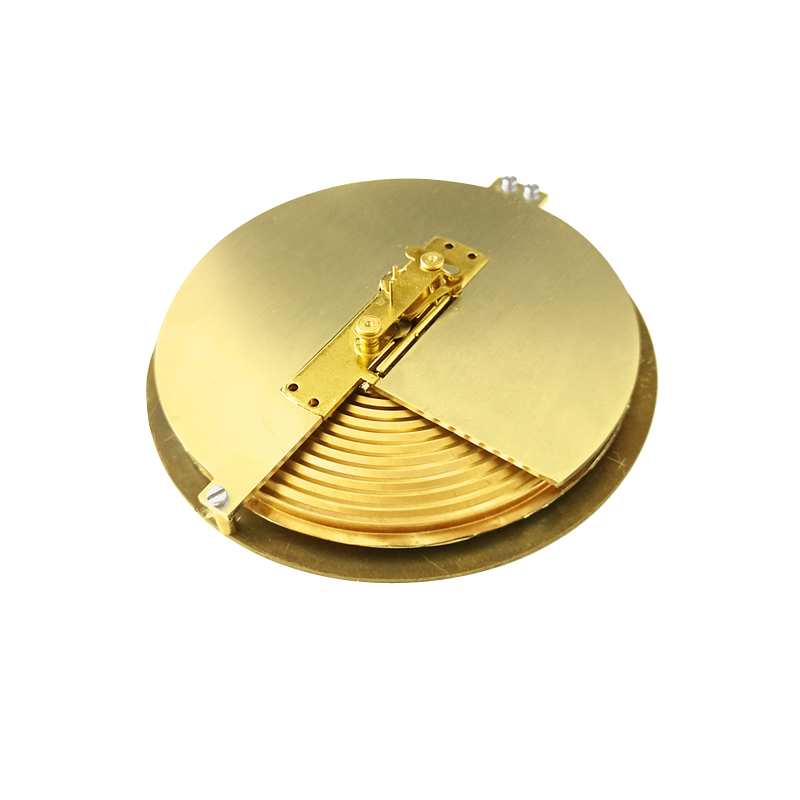
gru . 01, 2024 06:37 Back to list
OEM Diaphragm Pressure Gauge for Accurate Measurement and Reliable Performance Solutions
Understanding OEM Diaphragm Pressure Gauges A Comprehensive Overview
Pressure measurement is a critical parameter in various industrial applications, and diaphragm pressure gauges are among the most preferred instruments employed for this purpose. Original Equipment Manufacturers (OEMs) often leverage these gauges for their reliability and accuracy in measuring pressure in various environments. This article delves into the working principles, advantages, applications, and selection criteria of OEM diaphragm pressure gauges.
How Diaphragm Pressure Gauges Work
Diaphragm pressure gauges operate on the principle of mechanical deflection. The primary component, the diaphragm, is a thin, flexible membrane that separates the pressure being measured from the ambient pressure. When pressure is applied, the diaphragm flexes, and this movement is translated into an accurate reading on the gauge.
Most diaphragm gauges use a Bourdon tube mechanism alongside the diaphragm. As the diaphragm deflects due to the applied pressure, it transmits this motion through a series of levers and gears to the pointer on the dial. This ensures a clear and accurate measurement of pressure levels. Additionally, many diaphragm pressure gauges come equipped with various scaling options, allowing for readings in different units, such as PSI, bar, or kPa, catering to international standards and customer preferences.
Advantages of OEM Diaphragm Pressure Gauges
1. Accuracy and Precision OEM diaphragm pressure gauges are known for their high accuracy. They provide precise readings, which is essential in maintaining optimal operational conditions in industrial settings.
2. Durability Constructed from robust materials, these gauges can withstand harsh environments, including corrosive atmospheres and high-temperature applications. This durability minimizes the risk of damage and extends the operational life of the gauge.
3. Versatility Diaphragm pressure gauges can measure a wide range of pressures, making them suitable for various applications across different industries, including oil and gas, chemical processing, and pharmaceuticals.
4. Safety Many OEM diaphragm gauges are designed with safety features that prevent overpressure situations. This is crucial in safeguarding both the machinery and personnel from potential hazards.
5. Ease of Installation They are typically easy to install and require minimal maintenance, making them a convenient choice for many applications.
oem the diaphragm pressure gauge

Applications of Diaphragm Pressure Gauges
Diaphragm pressure gauges find applications in numerous sectors
- Oil and Gas Industry Used for monitoring pressure in pipelines and storage tanks, ensuring that operations remain within safe parameters. - Chemical Processing Essential in ensuring that the pressure of various chemicals remains at safe operational levels during production and transportation. - Water Treatment Plants Regular monitoring of pressure in water systems helps prevent leaks and ensures efficient water flow. - Pharmaceuticals In sensitive environments, maintaining specific pressures is crucial for product safety and efficacy.
Selecting the Right OEM Diaphragm Pressure Gauge
When choosing a diaphragm pressure gauge, several factors must be considered
1. Pressure Range Determine the maximum and minimum pressure levels that the gauge will measure to ensure it fits the application requirements. 2. Medium Compatibility The materials used in the diaphragm and the gauge casing should be compatible with the fluids being measured to prevent corrosion and ensure accurate readings.
3. Temperature Range Consider the operating temperature to ensure that the gauge can function optimally without being adversely affected by thermal conditions.
4. Connection Type Different applications may require specific connection types (e.g., threaded or flanged), which should align with the existing systems.
5. Calibration and Certification Selecting gauges that are calibrated and certified by recognized standards is critical for maintaining measurement accuracy and compliance with industry regulations.
Conclusion
OEM diaphragm pressure gauges are vital instruments across multiple industries requiring precise pressure monitoring. Their design, durability, and versatility make them indispensable tools in ensuring safe and efficient operations. By understanding their functionality, advantages, applications, and selection criteria, industries can make informed decisions that enhance operational integrity and safety.
-
High-Precision 5 Valve Manifold Differential Pressure Gauge Suppliers
NewsApr.29,2025
-
High-Precision Diaphragm Vacuum Pressure Gauges Manufacturers & Quotes
NewsApr.29,2025
-
Omega Differential Pressure Gauges High Accuracy & Durability
NewsApr.28,2025
-
Low Pressure Differential Pressure Gauges Precision Solutions & Quotes
NewsApr.28,2025
-
Digital Diaphragm Pressure Gaauge Precision Measurement & OEM Quotes
NewsApr.28,2025
-
Differential Pressure Gauge China Price High-Accuracy & Best Quotes
NewsApr.28,2025
